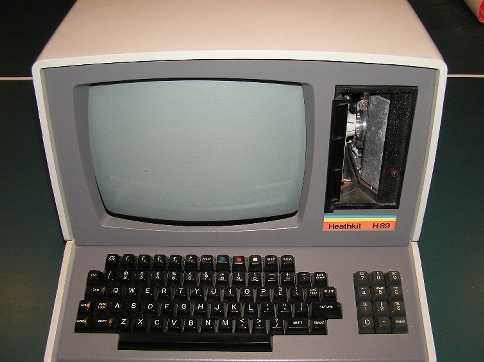|
The system was identical to the H-19 video terminal but had an additional CPU board between the CRT and the terminal
board. (Really identical because Heath offered upgrade kits to convert an H-19 to an H-88/H-89 computer).
It used hard sectored disks with a built-in card controller. Under either H-DOS or CP/M, disk capacity was of 90 KB.
Another model the H-88 was identical to the H-89, but did not include the floppy drive or controller. It had a
cassette port.
A couple of years later, the H/Z-37 soft sectored controller and ROMS came out, then was replaced with a double 5.25" floppy disk drive called H/Z-87 (102 KB, 250 ms). A double 8" floppy disk drive called H/Z-47 (1 Mb each) and a
hard disk called H/Z-67, it contained one 10MB 8" Winchester drive and one 8" floppy drive (like the one in
the H/Z-47).
It ran under HDOS or CP/M (the operating system used 16 KB of RAM). HDOS was originally written for the H-8, it ran without modification on the '89. This was a single-user OS written by J.
Gordon Letwin for Heath. It included a Basic interpreter and assembler. For CP/M, H/Z wrote a custom BIOS in assembler
that the new user could further customize for his specific hardware and assemble right on the machine. A version of MP/M
was also available for the system.
A lot of extension boards were available for this computer including 64 KB memory boards, hard-disk controller cards,
3-port serial I/O board, H19 terminal board, etc. A third party small upgrade card was also offered which doubled the
processor speed to 4 MHz.
An assembler/debugger was given with the DOS. A paper tape reader was available as well. Microsoft has adapted its various programming languages (Basic, Fortran, Cobol) for this computer. Borland also offered a version of Turbo Pascal
that worked great with the CP/M.
|






